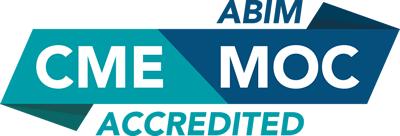
COURSE CREDITS & HOURS
14 AMA PRA Category 1 Credits™14 ACPE Credits
14.0 Contact Hours
14 (part II) MOC points in medical knowledge in the American Board of Internal Medicine's (ABIM) Maintenance of Certification (MOC) program
4 Hours of Pharmacology for Nurse Practitioners
COURSE FEES
TARGET AUDIENCE
PROGRAM PURPOSE
The goal of these presentations is to discuss several new guidelines in reference to common primary care topics. Review of these guidelines along with clinical application may lead to evidence - based, and more cost- effective evaluation and management using a team-based approach
- Smoking Cessation
- Recognize the role of smoking in disease etiology
- Utilize techniques to enhance the patient's ability to stop smoking
- Routine Adult Care
- Determine which screening tests are indicated for particular patients, according to USPSTF guidelines
- Order appropriate immunizations for adult patients
- Recognition and Treatment of Depression
- Understand the incidence and prevalence of anxiety and depression
- Evaluate patients with signs and symptoms of anxiety and depression in order to make an accurate diagnosis
- Prescribe appropriate medications to treat these disorders
- Obesity
- State the epidemiology of obesity in America and the health risks associated with obesity
Assess patients who are obese and determine if they need treatment - Recommend and utilize the ACC/AHA/TOS Guidelines for the Management of Overweight and Obese Adults, including diet, exercise, medications, and bariatric surgery
- Employ the Endocrinology Society Guidelines on Pharmacological Management of Obesity
- Thyroid disease
- Formulate a plan for the evaluation of a patient with presumed thyroid disease
- Interpret common lab and imaging tests in the evaluation of a patient with thyroid disease
- Select appropriate treatment modalities, both medical and surgical, for patients with thyroid disease, according to the American Thyroid Association Guidelines
- The identification and Treatment of Traumatized Patients
- Describe the characteristics associated with traumatic events
- Interpret the "red flags" or symptomatic manifestations of trauma in patients
- Demonstrate how to obtain a trauma history from a patient during the H and P
- Identify and propose interventions designed to treat symptoms of trauma and increase comfort during physical exam
- Eating Disorders
- Identify the behavioral and psychosocial triggers that promote eating disordered behaviors
- Distinguish between the symptoms of anorexia, bulimia, bingeing, orthorexia, and diabulimia
- Recognize the clinical "red flags" that indicate eating disordered behavior
- Apply appropriate interventions designed to treat eating disordered behaviors
- Celiac Disease
- Identify risk factors, symptoms, signs, tests, treatment for celiac disease
- C. difficile Colitis
- Define risk factors, symptoms, signs, tests, treatment for C. difficile colitis
- Eosinophilic Esophagitis
- Describe risk factors, symptoms, signs, tests, treatment for eosinophilic esophagitis
- Update in Chronic Hepatitis C
- Identify risk factors, symptoms, signs, tests, treatment for chronic hepatitis C
- Non-alcoholic fatty liver disease
- Define risk factors, symptoms, signs, tests, treatment for non-alcoholic fatty liver disease
- Cirrhosis and Complications
- Lack of awareness of the potential severity of outcomes, and benefits of treatment
- Update in Chronic Hepatitis B
- Identify risk factors, symptoms, signs, tests, treatment for chronic hepatitis B



























































